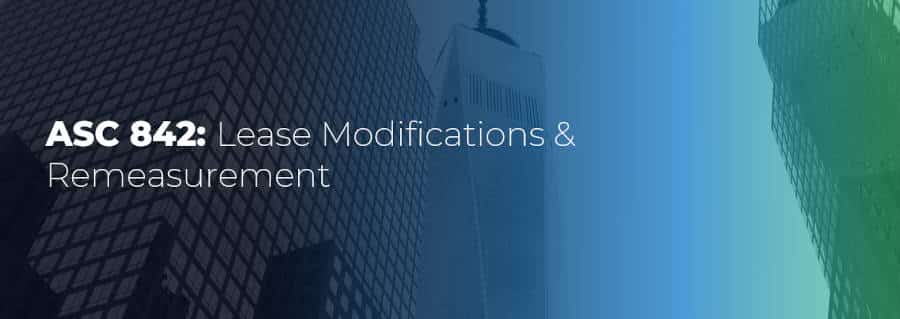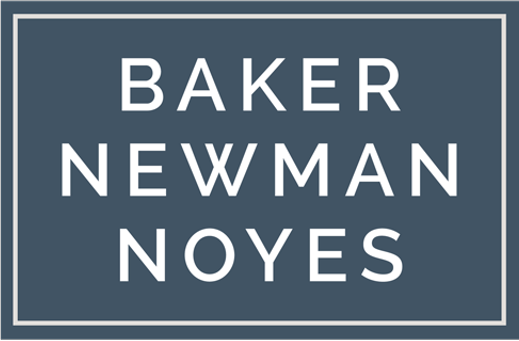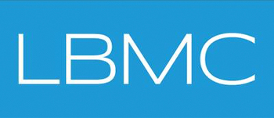ASC 842: Lease Modifications & Remeasurement
Updated 10th April 2025 | 5 min read Published 8th December 2020

Whether intended at the outset or found necessary during the initial or additional lease periods, lease modifications have always been common but accounting for these changes is that much more complicated under ASC 842.
A typical modification may arise when a lessee requires a break and rewrite or perhaps recognises a need to continue with the right of use asset beyond its minimum lease term. Alternatively, the change may be driven by the lessor. In either case, excellent clear and consistent guidance on accounting for the modifications is available under the new “leases standard” – both ASC 842 and IFRS 16.
The preparation for and handling of both historical and future Lease Modifications is the subject of this paper.
Definition
Simply put in terms of a lease, a modification changes the original terms and conditions of a lease agreement. Examples are –
- Shortening or lengthening the contractual lease term
- Reducing or increasing the number of underlying assets
- Increasing or decreasing the consideration in the lease payments
The key is establishing whether the modification is in fact a new lease or in substance an alteration to an existing lease agreement. ASC 842 distinguishes between lease modifications that represent, in substance, the creation of a new lease that is separate and distinct from the original lease and those that represent, in substance, a change in the scope of, or consideration paid for, an existing lease. Changes that result from renegotiations of the original contract are lease modifications. Increasing or decreasing the lease payments (cash flows) by contractual rental adjustment clauses is not a lease modification and likewise reassessing whether a lessee is reasonably certain to exercise (or not exercise) an option included in the original contract, is not a lease modification.
On assessing the modification, the Lessee must, from the effective date of the modification – which is ordinarily the date of signature of the agreement between lessor and lessee:
- for a separate lease, account for the new lease as just that with no recourse to the existing lease and
- when “not a separate lease” remeasure the right-of-use asset and associated lease liability at this date using the discount rate implicit in the lease for the remainder of the term where available.
Scenarios
Separate Lease
A lease modification is accounted for as a separate lease if both of the following conditions are met:
- the modification increases the scope of the “initial” lease by adding the right to use one or more underlying assets; and
- the consideration for the “initial” lease increases by an amount equivalent to the stand-alone price for the increase in scope and any appropriate adjustments to that stand-alone price to reflect the circumstances of the particular contract.
A good example might be where the lessee agrees to rent additional laptop computers with a similar contractual end date as an existing lease of laptops from an existing lessor with a stand-alone rental reflecting market rate. The assets may be similar, the lessor the same, master lease terms and conditions identical, all rentals reflecting the then market rates but in essence and under ASC842 we have a new discrete lease.
Similarly treated as separate leases will be “drawdown” type lease agreements where delivery of the underlying assets takes place over a period of time, resulting in different commencement dates. In such cases, the lessee does not apply the lease modification guidance when it gains control over the use of those additional underlying assets but identifies the separate lease components and allocates the consideration in the contract to those components, and accounts for each separate lease component from its actual commencement date.
In any Separate Lease scenarios, the lessee:
- will account for the “modification” of its “right of use” asset pool as a separate lease in the same way as any new lease; and
- will make no adjustment to the initial lease.
Not a Separate Lease
Modifications might include any of the following –
-
- Increase in the Lease Term
- Increase in the scope of a lease by adding assets, not at a stand-alone price
- Decrease in the scope of the lease by removal or return of assets
- Decrease in the Lease Term for any or all assets subject to the lease
- Increase or decrease in consideration alone
- Termination or break of a lease
- for modifications that decrease the scope of the lease, the lessee needs to decrease the carrying amount of the right-of-use asset to reflect the partial or full termination of the lease, and recognize a gain or loss that reflects the proportionate decrease in scope; and
- for all other modifications, the lessee should make a corresponding adjustment to the right-of-use asset.
- In accounting for the modification, the lessee must
-
- allocate the consideration to each lease component on the basis of the relative stand-alone price of the lease components and the aggregate stand-alone price of the non-lease components;
- determine the revised lease term;
- remeasure the lease liability by discounting the revised lease payments at the revised discount rate (if not available the incremental borrowing rate);
- additionally, for a decrease in scope or term decrease the pre-modification right-of-use asset (and pre-modification lease liability) and recognize any gain or loss in profit or loss to reflect partial or full termination;
- finally, make a corresponding adjustment to the right-of-use asset.
Of course, there are other more complex modifications (a combination of 2 or more of the above increases, decreases or terminations) such as an increase in lease term and decrease in consideration and again these must be carefully and accurately accounted for. Ready-made solutions are available and lessees are encouraged to review and choose one.
Summary
Lessees must ensure that their lease accounting policies and their chosen lease accounting software solution are set up to handle partial terminations, impairments, changing assessments of what is reasonably certain, data corrections, lease renegotiation events, and other company and industry-specific scenarios.
A quality accounting system is a must, but prudent lessees will additionally be adopting a robust Lease Accounting Software Solution such as LOIS from Innervision, capable of providing comprehensive tracking of all lease accounting related activity. With an ability to capture all lease level transactions and any re-measurements, the built-in audit trail will facilitate a smoother and “less costly” review of lease activity and accounting from the external auditors.
Disclaimer: this article contains general information about the new lease accounting standards only and should NOT be viewed in any way as professional advice or service. The Publisher will not be responsible for any losses or damages of any kind incurred by the reader whether directly or indirectly arising from the use of the information found within this article.




